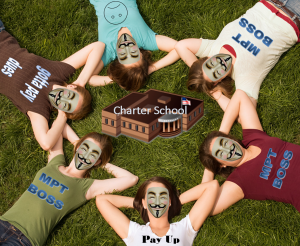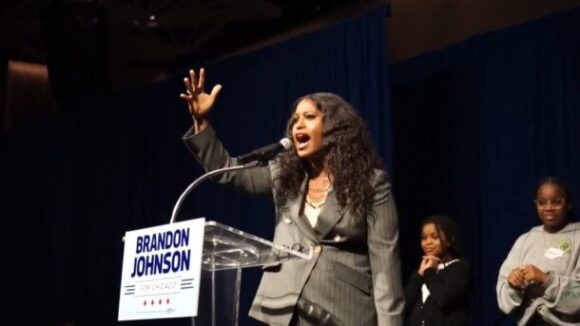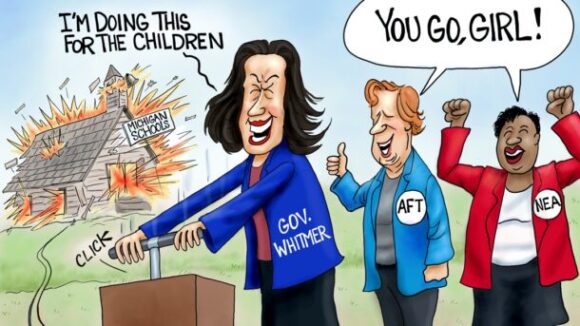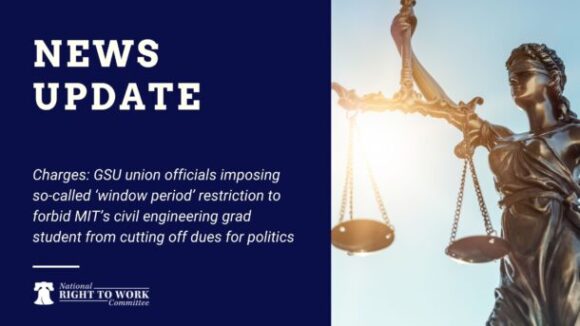Is This Any Way to Run a City’s Schools?
Leaked CTU Proposals Won’t Do Anything to Improve Schools’ Poor Performance
 Terrance Scanlon finds compelling evidence that the union bosses have sent their sights on charter schools which are not required, currently, to join union collective bargaining units. The union bosses see this both as a threat and a pool of potential union dues that are not being tapped:
Terrance Scanlon finds compelling evidence that the union bosses have sent their sights on charter schools which are not required, currently, to join union collective bargaining units. The union bosses see this both as a threat and a pool of potential union dues that are not being tapped:
If you can’t beat them, take them over. That seems to be the new union strategy on charter schools. Charter schools are publicly funded schools that are governed by private groups that sign a contract, or charter, with the state. The charter requires that the school meet certain standards of accountability in return for taxpayer funding, but in other areas it exempts the school from many burdensome state or local regulations. Some of the most burdensome are rules required by labor unions.
Charter school teachers usually are not required to join existing union collective-bargaining units. This means charter schools can more easily promote good teachers and fire bad ones. But, of course, this has made charter schools targets for hostile union action.
Unions correctly view charter schools as a threat to their stranglehold over public education and the tax dollars that come with it. Unions have denounced charter schools for “skimming” off the best students from the public schools, and they have sued school districts that introduce charter schools. Unions have tried to block or repeal charter school laws, and they’ve tried to limit the number of charter schools allowed by states.
But in Minnesota, the teachers unions are moving in a new direction. State officials recently have given the Minnesota Guild of Charter Schools, an organization created by the Minneapolis Federation of Teachers (MFT), the right to authorize charter schools.
The prospect of union-authorized charter schools disturbs many observers, who predict it will lead to conflict. A report sponsored in part by the Progressive Policy Institute summarized the source of the hostility between the two sides:
“Unions believe in professionalism through clearly defined roles, rights and responsibilities for teachers. Charter school leaders equate this vision of professionalism with resistance to change and protection of unfit teachers. Charter leaders believe in competition and entrepreneurialism. Union leaders equate these ideas with indifference to disadvantaged students and treatment of teachers as commodities.”
But MFT President Lynn Nordgren is not troubled by the cognitive dissonance generated by a teachers union authorizing charter schools. Indeed, Ms. Nordgren hopes the union will sponsor as many as a half-dozen schools by next year, explaining, “We feel that overall, education has gotten to a place where the teachers’ voice has been lost. And we feel like having these schools will give us an opportunity to get that voice back.”
Remember, when a union boss says “teacher,” what he really means is “union.” Ms. Nordgren gives herself away when she proclaims: “And we want to show that you can, in fact, have great schools and teachers can be in unions at the same time. … It’s really to dispel the myth that’s out there that the union is the problem when, in fact, the union can be one of the ways schools can get better.”
So bad have the teachers unions been for American education, in fact, that they have made experiments like charter schools a necessity.
Now the unions want in, and no wonder: According to U.S. Department of Education statistics, “From 1999-2000 to 2008-09, the number of students enrolled in public charter schools more than tripled from 340,000 to 1.4 million students.”
It must be driving the unions crazy to have so many students beyond their poisonous reach.

Leaked CTU Proposals Won’t Do Anything to Improve Schools’ Poor Performance

Michigan's K-12 school enrollment has dropped by 4.9% since 2019, and many parents have moved their children to states with less powerful unions or enrolled them in charter schools, leading to a 3.3% increase in charter school enrollment.

Charges: GSU union officials imposing so-called ‘window period’ restriction to forbid MIT’s civil engineering grad student from cutting off dues for politics